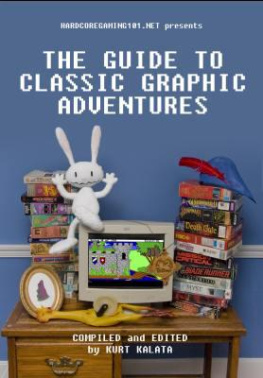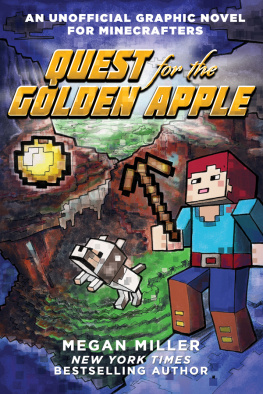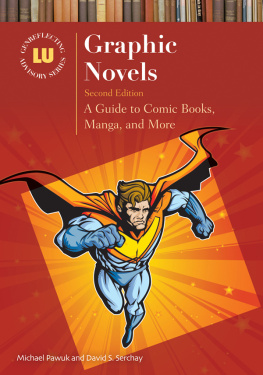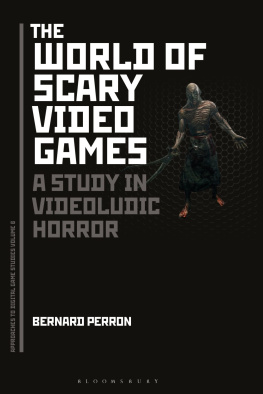Hardcoregaming101.net Presents:
The Guide to Classic Graphic Adventures
Edited and Compiled By Kurt Kalata
Hardcoregaming101.net Presents:
The Guide to Classic Graphic Adventures
By Kurt Kalata
All images are copyrighted by the developers and/or publishers of their respective games.
All rights reserved, including the right of reproduction in whole or in part in any form.
First Edition: May 2011
http://www.hardcoregaming101.net
Credits and Acknowledgements
Contributors
Brad Allison: Scooby-Doo: Classic Creep Capers
Kevin Anderson: Gateway, Superhero League of Hoboken, Sanitarium, Teenagent
Michael Boyd: Neverhood
Corwin Brence: Heart of China, Alien Incident
Ed Burns: Hugo
Jon Cameron: Tass Times in Tonetown, Beavis and Butthead
Paul Chnevert: Myst
Jason Johnson: Neuromancer
Ryan McSwain: The Dark Eye, Blade Runner (co-author), Orion Burger, The Space Bar, KULT, Nightlong, BloodNet, Waynes World, Normality, Below the Root, Cosmology of Kyoto, Gadget, Obsidian, Bad Day on the Midway, Bill & Teds Excellent Adventure, Snoopy, Plan 9 From Outer Space, Bureau 17, Tequila & Boom Boom, 9: The Last Resort, Morpheus
Samuel Melzner: Secret Files, Rex Nebular, Spellcasting, Gray Matter, Shadow of Destiny
Harry Milonas: Blade Runner (co-author)
Aiden Monnens: Blazing Dragons
Collin Pierce: Zork
Michael Plasket: Indiana Jones, Strong Bad, Loom, The Chzo Mythos
John Szczepaniak: Lost Eden, The Fish Files, Snow Job, Portopia Renzoku Satsujin Jiken
Ryan Woodward: The Dig
All others by Kurt Kalata
Cover feelies designed and photographed by Kate Eggleston (kate.eggleston@yahoo.com), except for Purple Tentacle cross-stitch portrait by Brandi Swenson
Copy editing by Kevin Anderson, Samuel Melzner and John Szczepaniak
Special thanks goes to Kevin Gifford for the Japanese Shadowgate translations; Rick Barba and Peter Spear for their excellent strategy guides; anyone and everyone involved in the production of ScummVM and DOSBox; Ashley Day and Jack Allin for their help setting up interviews; Jeremy Parish, whose books inspired this one; Ryusui for filling in the blanks for Pegasus Prime; my parents for continuing to buy me games in my youth; my brother Alan for lending me his old laptop; and Sophia Freire for her endless encouragement.
Table of Contents
Dynamix
Coktel Vision
Infocom
Interplay
Konami
Access Software
Horrorsoft/Adventure Soft
WestwoodStudios
Accolade
Exxos/Cryo
Delphine Software
Core Design
Revolution
Cyberdreams
MicroProse
Pendulo Studios
Divide by Zero
Take 2 Interactive
Dynabyte
DreamForge Intertainment
inSCAPE
Sanctuary Woods
Microds
Series
Individual Games
Independent Games
Introduction
So when did the adventure game genre collapse? The genre started with the mainframe text game Adventure , which was expanded into Colossal Cave . This begat Zork and founded Infocom, while a little company called On-Line Systems (later known as Sierra On-Line) began putting graphics in these games and ended up with Mystery House and Kings Quest . They exploded in popularity around the introduction of the CD-ROM, where the expanded storage space allowed for fancy multimedia productions. But all bubbles burst, and the cause was any number of issues. Part of the blame lays on outside factors, like the burgeoning popularity of first person shooters and real time strategy games. An equal part of the blame can be placed on the games themselves, which either diluted the experience in favor of serving a broader market, or failed to evolve and stuck with the same archaic puzzle solving mechanics theyd been maintaining for years. The European market continued to be sustainable, but in America, the adventure game had all but perished.
The genre has seen a resurgence lately, thanks to the rejuvenating efforts by Telltale Games, as well as an influx of Japanese games on Nintendo DS and a number of high quality independent games. Its still not as prominent as it was in its glory days, however, and older gamers will remember a time when LucasArts and Sierra reigned the golden age of adventure gaming. While fans are mostly familiar with the likes of Kings Quest and Monkey Island , there are hundreds of adventure games produced the world over, and this book aims to catalog them.
When this project started, my initial plan was to cover the best of adventure gaming. This included the entirety of LucasArts and Sierra, since they were by far the most popular, but I also wanted to include the works of Legend, since they were overlooked and their library is excellent. I had also wanted to include some of the better regarded series and games, like Broken Sword , Simon the Sorcerer , and The Last Express . However, as I began to work on this, it dawned on me how much this conflicted with the spirit of Hardcore Gaming 101. The other main goal of the site is to highlight lesser known games focusing largely on LucasArts and Sierra would be like writing a JRPG book and only discussing Final Fantasy and Dragon Quest . And so the scope expanded to anything significant, which ended up being both a good and a bad idea.
It was a bad idea from a project management standpoint, because significant is a nearly impossible word to define. Surely just because a game was unpopular didnt mean it was bad, right? Therefore, I ended up playing any game that sounded vaguely interesting, which soon expanded to practically anything I could find. The scope creep expanded the book from a planned 500 pages to over 750, and extended the planned release date by six months.
On the other hand, it was a pretty good idea in the end, because it made the book even more comprehensive. It still doesnt cover everything in the adventure game genre such a thing would probably be impossible but it does cover a gigantic chunk of it, so if you read the book cover to cover, you can consider yourself an expert. It was also good for me, too, as well as the other contributors, because it introduced us to some cool stuff we wouldnt have played otherwise. (Personally Im glad I gave chances to KGB and The Gene Machine , and some contributors mentioned how much they enjoyed Orion Burger and Tequila & Boom Boom .)
We still needed to reign in the scope a bit, though. Originally Id wanted to include games from all eras, but decided to focus on the golden age, running from the release of Kings Quest in 1984, up until roughly 2000. However, we still feature a number of newer games, mostly ones that have thematic ties to older titles, including Strong Bads Cool Game for Attractive People (which has a whole episode devoted to old school adventure games), Secret Files (obviously inspired by Broken Sword ), A Vampyre Story (developed by a LucasArts vet), Gray Matter (designed by the writer of Gabriel Knight ) and a few others. I also included Runaway , which is a series thats often suggested for fans of old LucasArts games, as well as Syberia , which is relatively popular too, and Limbo of the Lost , because its the most derided game in adventure gaming history.
Its really tough to define adventure game, because elements from it can blend into other genres. There are numerous games we had to discount because they were technically hybrids, but fell too closely on one side of the fence. For example, we included Horrorsofts Personal Nightmare , since it felt like a text adventure, but didnt include its succeeding titles, the Elvira games and Waxworks , because they integrated RPG elements more heavily. On the other hand, we did include Westwoods Circuits Edge , because it has a heavy focus on narrative, more so than most RPGs of the time (it was also released under the Infocom label). We didnt cover Inca , because while the puzzle solving parts are similar to other Coktel adventure games, a good chunk of the game is spent flying spaceships, so its not really the focus.
Next page








